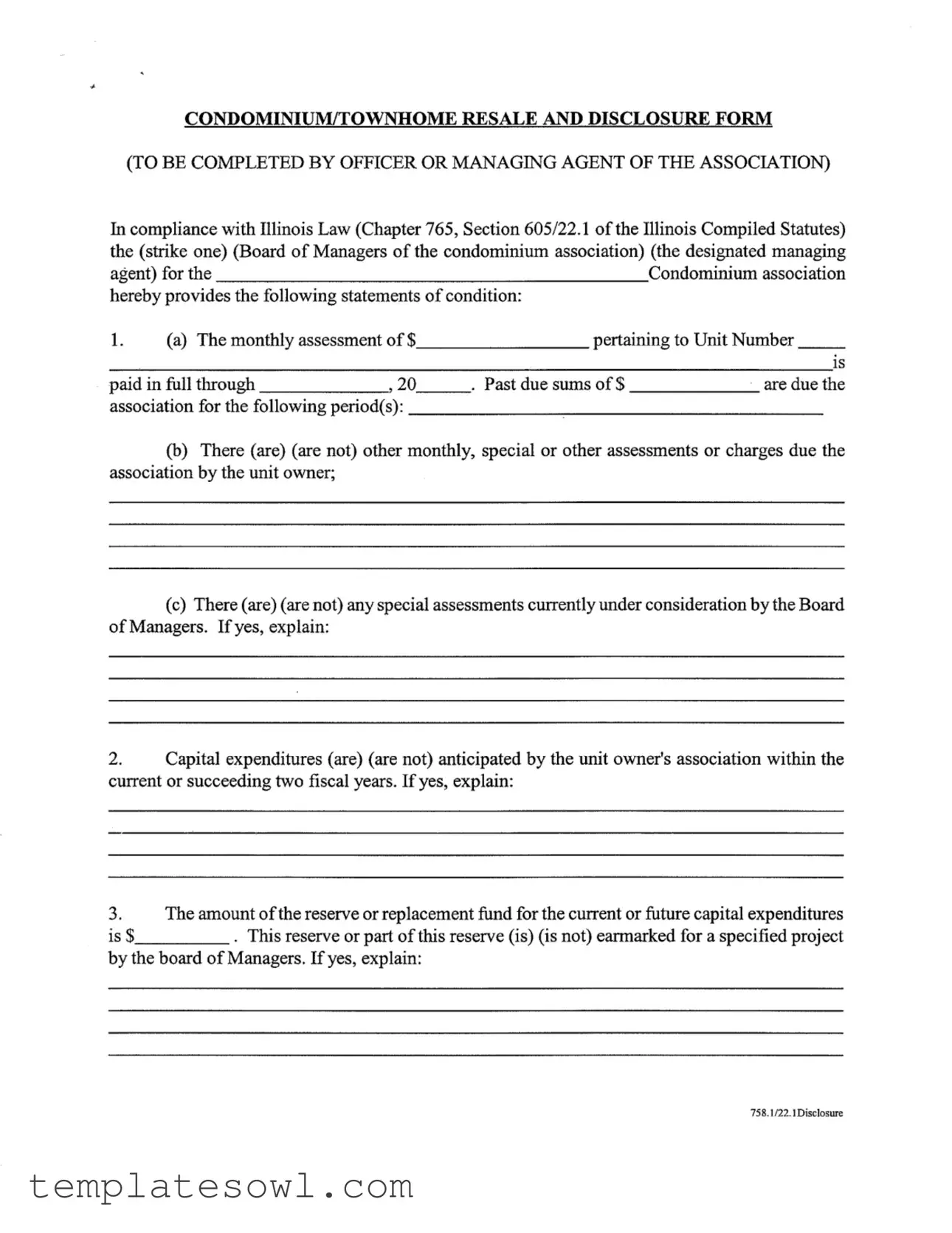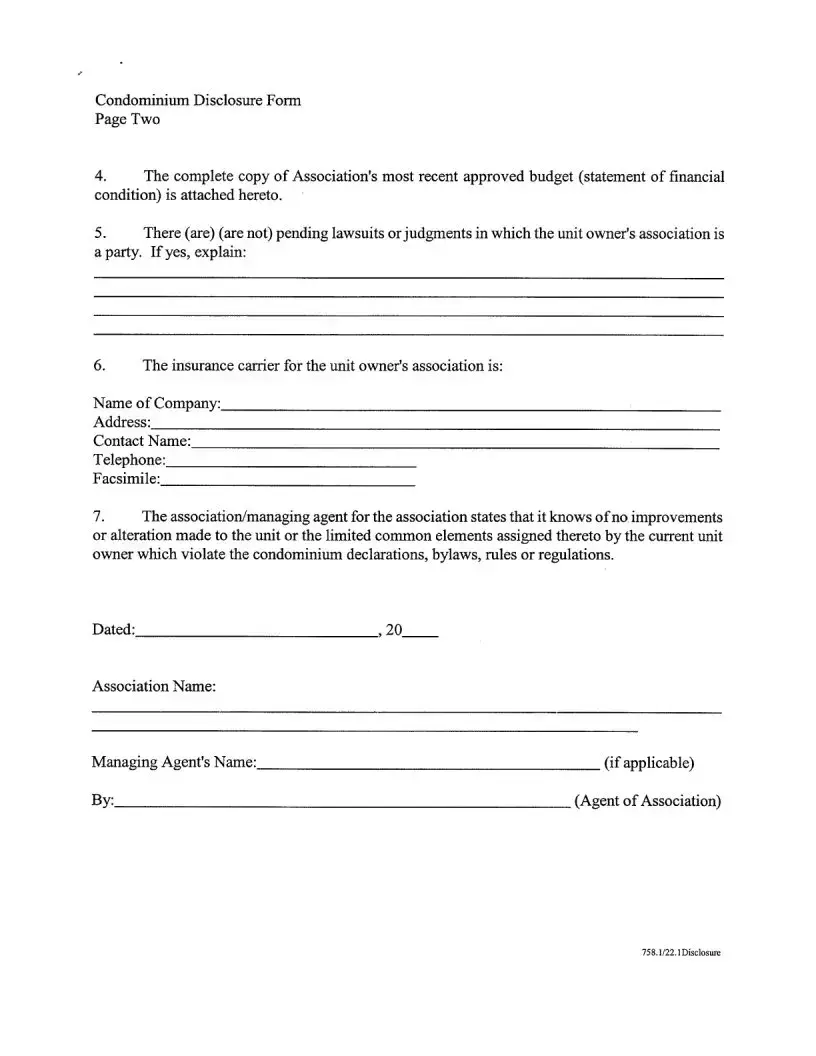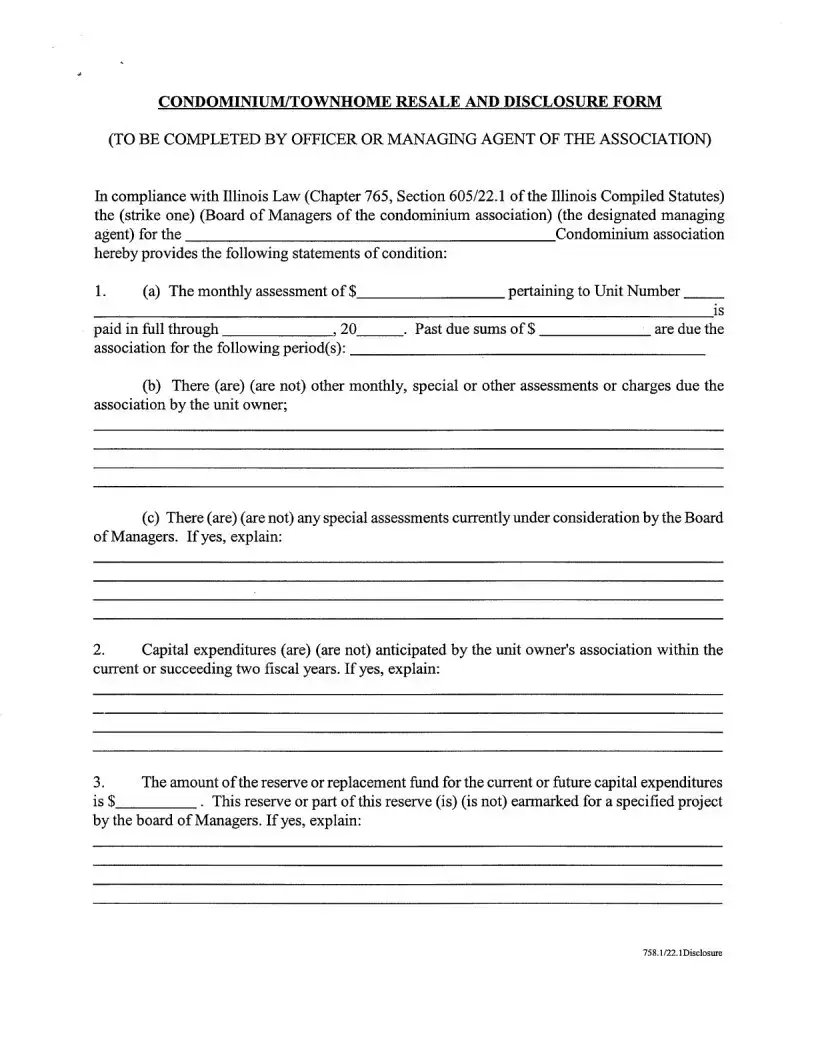What is the purpose of the Act 221 Disclosure form?
The Act 221 Disclosure form is designed to ensure that potential buyers of a condominium or townhome receive vital information about the property and the associated homeowners' association. This form provides details about financial assessments, potential capital expenditures, and any ongoing legal matters that may affect the property. Its goal is to promote transparency, allowing buyers to make informed decisions.
Who fills out the Act 221 Disclosure form?
This form must be completed by an officer or managing agent of the homeowners' association. This means it could be a member of the board of managers or a designated managing agent responsible for overseeing the day-to-day operations of the association. Their role is to ensure accurate and up-to-date information is provided to prospective buyers.
What kind of financial information is disclosed?
The form covers several financial aspects, including current monthly assessments paid by the unit owner and any past due sums. It also indicates whether there are any special assessments or additional charges due. Furthermore, it reveals whether any special assessments are being considered by the Board of Managers, which could impact future costs for residents.
How does the form address future financial obligations?
In addition to current financial obligations, the form looks ahead. It outlines anticipated capital expenditures for the current and following two fiscal years. This foresight allows potential buyers to understand any upcoming costs that could influence their financial planning when purchasing a unit.
What is the significance of the reserve or replacement fund mentioned in the form?
The reserve or replacement fund is critical for the long-term maintenance and improvements of the property. The form indicates the amount set aside for future capital projects and specifies if these reserves are earmarked for particular projects. Understanding these funds helps buyers evaluate the financial health of the association and the property's maintenance strategy.
Are there any legal concerns addressed in the disclosure?
The form requires the disclosure of any pending lawsuits or judgments involving the homeowners' association. This information is crucial, as ongoing legal issues could have financial implications for current and future residents. Having clarity here helps ensure buyers know what they might be getting into.
What insurance information is provided?
The form includes details about the insurance carrier for the unit owner's association, including the company name, contact information, and other relevant details. This information is vital for understanding the coverage the association has in place, which can affect residents' safety and liability concerns.
What should I do if I have further questions after reviewing the disclosure?
If you have any questions or need clarification after reviewing the Act 221 Disclosure form, it is recommended to reach out directly to the managing agent or the board of managers of the association. They can provide additional insights and address any specific concerns you may have regarding the condominium's operations and status.


